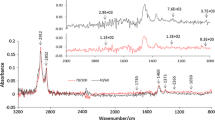Abstract
Moisture damage in asphalt mixtures is a complicated mode of pavement distress that results from the loss of interfacial adhesion between the aggregate and bitumen and/or the loss of cohesion within the bitumen. Both adhesive and cohesive strength of aggregate-bitumen bonds can be determined in the tensile testing mode. This paper presents the development of suitable procedure consisting of an innovative sample preparation, controlled moisture conditioning and new pull-off test set-up to characterise moisture damage resistance of the bonding strength of aggregate-bitumen samples that is sensitive to the mineralogical and physicochemical properties of the aggregates as well as key bitumen physical properties. The test set-up consists of three main parts: a moisture conditioning step designed to ensure characteristic moisture diffusion into the aggregate-bitumen interface, accurate determination of bitumen film thickness using a modified dynamic shear rheometer and direct tension fixtures mounted on an Instron universal testing machine. The capability to vary loading rate, accurately control film thickness and ensure moisture diffusion to the aggregate-bitumen interface are an important improvement over most existing pull-off tests. The test was also found to be sensitive to moisture conditioning time, moisture uptake and the type of aggregate. All samples were subjected to the pull-off test to characterise their tensile strengths before and after moisture conditioning. The results show that the magnitude of the aggregate-bitumen bonding strength in the dry condition is mainly influenced by bitumen. However, the magnitude of the tensile strength after moisture conditioning was found to be influenced by mineralogical composition as well as the moisture diffusion properties of the aggregates. The new test was found to be repeatable with variability comparable to most advanced tensile testing systems for bitumen.
Access this chapter
Tax calculation will be finalised at checkout
Purchases are for personal use only
Similar content being viewed by others
References
J. Grenfell, N. Ahmad, Y. Liu, A. Apeagyei, D. Large and G. Airey. Assessing asphalt mixture moisture susceptibility through intrinsic adhesion, bitumen stripping and mechanical damage. Road Materials and Pavement Design 2014, 15(1): 131-152.
S. Caro, E. Masad, A. Bhasin and D. Little. Micromechanical modeling of the influence of material properties on moisture-induced damage in asphalt mixtures. Construction and Building Materials 2010, 24: 1184–1192
M. Horgnies, E. Darque-Ceretti, H. Fezai, E. Felder. Influence of the interfacial composition on the adhesion between aggregates and bitumen: Investigations by EDX, XPS and peel tests. International Journal of Adhesion & Adhesives 2011, 3: 238–247
U. Bagampadde, U. Isacsson and B.M. Kiggundu, Classical and Contemporary Aspects of Stripping in Bituminous Mixes, Road Materials and Pavement Design 2004; 5(1): 7-43.
J.C. Petersen, H. Plancher, Model Studies and Interpretive Review and the Competitive Adsorption and Water Displacement of Petroleum Asphalt Chemical Functionalities on Mineral Aggregate Surfaces, Petroleum Science & Technology 1998; 16(1-2): 89-131.
J. Grenfell, N. Ahmad, Y. Liu et al. Assessing asphalt mixture moisture susceptibility through intrinsic adhesion, bitumen stripping and mechanical damage. Road Materials and Pavement Design 2014; 15(1): 131-152.
Y. Liu, A. Apeagyei, N. Ahmad et al. Examination of moisture sensitivity of aggregate-bitumen bonding strength using loose asphalt mixture and physic-chemical surface energy property tests. International Journal of Pavement Engineering 2014; 15(7): 657-670.
R.P. Lottman, Predicting Moisture-Induced Damage to Asphaltic Concrete Field Evaluation, NCHRP 246, 1982.
T. Aschenbrener, Evaluation of Hamburg wheel-tracking device to predict moisture damage in hot-mix asphalt. Transport Research Record 1995; 1492: 193-201.
Y-R Kim, I Pinto and S-W Park. Experimental evaluation of anti-stripping additives in bituminous mixtures through multiple scale laboratory test results. Construction and Building Materials 2012; 29: 386-393.
J. Grenfell, N. Ahmad, G. Airey, A. Collop and R. Elliott. Optimising the moisture durability SATS conditioning parameters for universal asphalt mixture application. International Journal of Pavement Engineering 2012; 13(5): 433-450.
A. Apeagyei, J. Grenfell, G. Airey. Moisture-induced strength degradation of aggregate–asphalt mastic bonds. Road Materials and Pavement Design 2014; 15(1): 239-262.
Marek CR, Herrin M. Tensile behavior and failure characteristics of asphalt cements in thin film. Proceeding, Association of Asphalt Paving Technologists 1968; 37: 387-421.
M. Horgnies, E. Darque-Ceretti, H. Fezai, & E. Felder. Influence of the interfacial composition on the adhesion between aggregates and bitumen: Investigations by EDX, XPS and peel tests. International Journal of Adhesion and Adhesives 2011; 31(5): 238–247.
G.D. Airey, Y.K. Choi. State of the art report on moisture sensitivity test methods for bituminous pavement materials. Road Materials and Pavement Design 2002; 3(4): 355-372.
Author information
Authors and Affiliations
Corresponding author
Editor information
Editors and Affiliations
Rights and permissions
Copyright information
© 2016 RILEM
About this paper
Cite this paper
Zhang, J., Apeagyei, A.K., Grenfell, J., Airey, G.D. (2016). Experimental Study of Moisture Sensitivity of Aggregate-Bitumen Bonding Strength Using a New Pull-Off Test. In: Canestrari, F., Partl, M. (eds) 8th RILEM International Symposium on Testing and Characterization of Sustainable and Innovative Bituminous Materials. RILEM Bookseries, vol 11. Springer, Dordrecht. https://doi.org/10.1007/978-94-017-7342-3_58
Download citation
DOI: https://doi.org/10.1007/978-94-017-7342-3_58
Published:
Publisher Name: Springer, Dordrecht
Print ISBN: 978-94-017-7341-6
Online ISBN: 978-94-017-7342-3
eBook Packages: EngineeringEngineering (R0)




